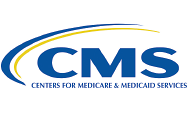States Pilot New Medicaid Substance Use Treatment Plans
Abstract
Several states are piloting overhauls to their substance use disorder treatment programs for Medicaid patients, including allowing treatment at large residential facilities.
In an effort to combat the opioid epidemic, the federal government has begun allowing larger residential substance use treatment centers in several states to begin billing Medicaid for the first time for such treatment.

The policy change comes since there has been a 2.8-fold increase in opioid overdose deaths over the past 12 years. In 2015, more than 35,000 people died in the United States due to an opioid overdose, according to the Centers for Disease Control and Prevention. Medicaid beneficiaries are four times more likely to use heroin or become addicted to pain relievers than people with private insurance. Although effective evidence-based treatments for opioid use disorder exist, less than one-third of Medicaid beneficiaries with the disorder received treatment in 2015.
The Centers for Medicare and Medicaid Services (CMS) sent a letter to states on November 1, 2017, offering to partner with them to help address the opioid crisis and allowing them to receive federal Medicaid funding for the “continuum of services” to treat substance use. This would include a waiver of the long-standing rule excluding residential mental health and substance use treatment centers with more than 16 beds from receiving Medicaid reimbursements. (This rule, which APA has long opposed, is known as the Medicaid Institutions for Mental Diseases [IMD] exclusion.)
To take part, states must receive an approval for a so-called Section 1115 waiver and spell out how they will provide high-quality, evidence-based services for addiction treatment and how the inpatient and residential treatment will supplement and coordinate with the state’s community-based care. The waivers last five years, and participating states must ensure the waivers don’t increase Medicaid spending.
By improving states’ substance use disorder treatments, the hope is that these patients will ultimately reach sustainable recovery and consume fewer health care resources overall. One study found that 75 percent of spending on Medicaid patients with a substance use disorder was for their comorbid physical and mental health conditions.
States receiving these waivers so far include California, Maryland, Massachusetts, New Jersey, Utah, Virginia, and West Virginia; Kentucky has applied for a waiver.
APA, along with five other front-line physician groups in patient care representing more than 560,000 physicians, issued a statement last month urging CMS to ensure any Section 1115 waivers “first, do no harm” to current enrollees. The coalition called on CMS to ensure that new waivers must not increase out-of-pocket costs, reduce benefits, erect new barriers to coverage or eligibility, cut access to qualified providers, or shift costs to families or providers.
Virginia, where more than 1,100 people died from opioid overdose last year—nearly double the rate five years ago—went live April 1, 2017, with its new waiver program. It boosts the state’s overall reimbursement rate for substance use treatment of Medicaid patients and allows for reimbursement for larger residential providers, peer support, inpatient detox, and partial hospitalization.
To ease the transition, Virginia’s General Assembly funded provider education on the changes, including Medicaid billing guidance sessions, prior to the rollout, said Jodi Manz, assistant secretary of Health and Human Resources in Virginia’s Office of the Secretary of Health and Human Resources.
Based on results from the first three months of Virginia’s Addiction and Recovery Treatment Services (ARTS) program, it appears to be working: 50 percent more Medicaid patients with substance use disorders received treatment than in a similar period in 2016. Among Medicaid beneficiaries who use opioids, 48 percent received pharmacotherapy during the first three months of ARTS, a 30 percent increase over a year earlier, while the number of opioid use treatment providers more than doubled.
“The increase in reimbursement rates has brought a lot more providers to the table, so more Medicaid recipients can receive these services,” Manz said. The changes have also helped spur some innovative thinking among substance use treatment providers, who have created “one-stop shops,” with medication treatment, counseling, and peer support under one roof.
Maryland implemented its Section 1115 waiver in July 2017. The waiver comes as total overdose deaths in Maryland reached nearly 1,200 in the first half of 2017; of these, two-thirds were attributed to the synthetic opioid fentanyl. The funding changes require providers to bill Medicaid on a per-patient basis instead of receiving funds from the state block grants Maryland had provided.
“Residential substance abuse disorder treatment providers will no longer face the 16-bed restriction and will be able to expand their capacity to serve more individuals, as well as include more residential levels of care,” Maryland wrote in a release.
California was one of the first states to have its waiver, called the Drug Medi-Cal Organized Delivery System, approved by CMS. Since 2015, seven counties have been approved to participate, with an additional 33 counties awaiting final approval for their programs. The pilot focuses on improving access for Medicaid patients, along with better integration and coordination of care.
The increased benefits and access to the program provided to Medicaid beneficiaries have resulted in more substance use providers signing on to accept Medicaid patients, according to Anthony Cava, a spokesperson at the California Department of Health Care Services. ■



